ai
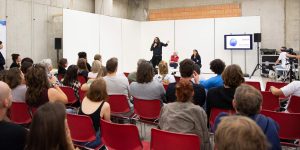
Gallery Spaces Panel VII: Digital art going mainstream?
With the history of digital art commencing in the 1960s to current immersive digital art installations, (meow wolf, artechouse Team Lab or GAN) generating an immense following quickly and quoted as commercially successfully - did digital art become mainstream? Marketplaces for native digital art mushroom in a battle for creators advertising a new way of experiencing, collecting and showing art. The conversation will try to unfold what artistic production of digital art means for the artists themselves, museums and collectors with regard to exhibition making, collecting and archiving.
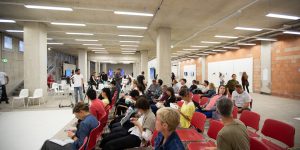
Gallery Spaces Panel VI: Paradoxes and obstacles in maintaining and staging alive biomedia art
This panel with prominent protagonists involved in the field of biomedia art discusses the unprecedented challenges to stage, transport, conserve and collect art that appropriates and subverts the most diverse technologies of the life sciences. The shift from organic representation or simulation to actual biological manipulation results in technical, institutional, regulatory, legal, ethical, bureaucratic, philosophical and aesthetical issues with regards to museum infrastructures, the status of living organisms, tissues and GMOs, and their fragility when maintaining, conserving, re-enacting or shipping them. Such works at the threshold of microperformativity and necropolitics face undesired bacterial deterioration and contamination, and cultural institutions and collectors are still ill-equipped to deal with the subsequent issues.
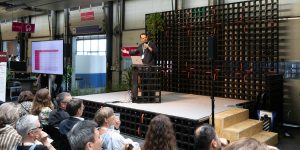
Practices & Impacts of STARTS Collaborations
FRI 6.9. | 10:00 – 12:00 Practices and impacts of interdisciplinary approaches will be discussed through innovative projects, with a special focus on the link between artificial intelligence and music.
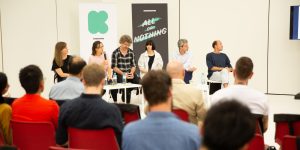
Gallery Spaces Panel V: Artists & scientists – Exploring new forms of collaboration (Scientist in Residence Program)
Just as artists today are increasingly interested in science and technology, scientists and technologists are turning to the arts as a source of new perspectives and tools for communication. This trend requires new initiatives to establish better links between the worlds of art and science, as well as between cultural and research institutions. Through its Art&D labs, Gluon supports artist residencies in laboratories of companies, research institutes and universities. Through its Scientists in Residence programme, it encourages artists to open their studios to scientists and technologists. On the basis of their experiences in these programmes, the scientists of this panel will reflect on the following questions: To what extent can these interdisciplinary collaborations stimulate innovative ideas and projects of social relevance? What challenges do scientists have to face in working together with artists? And how can organizations help them achieve meaningful exchanges?
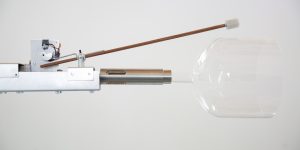
Smart.ing Bodies
Evelina Rajca (PL)
Sand, or to put it more precisely high-purity silicon dioxide particles, is the essential raw material from which we make concrete, glass, fiberoptic cables, computer chips, and other high-tech hardware. The installation Smart.ing Bodies features “glass instruments” made of quartz sand that Evelina Rajca collected from disappearing beaches and mountains around the world. The multisensory sound installation consists of those two glass resonators, sensors, motors, and an algorithmic composition created partly by AI learning processes. In order to keep on playing and to avoid a “resonance disaster” (the destruction of the glass or motor), the algorithmic program has to learn to conduct a variety of smart frequencies. What can be heard is the sound of sand, which is pure yet complex and ever-changing.
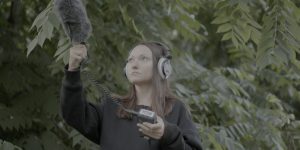
Bird Language
Helena Nikonole (RU)
This project explores the possibilities of Artificial Intelligence in a bio-semiotics context: the artist uses machine learning to explore the sign systems of birds.

Gallery Spaces Panel IV: Interdisciplinary Art – how becoming established?
The art market refers to the process of art distribution and sales. Museums, galleries, collectors, curators, critics are part of the active market participants influencing the dynamics. Artists to choose interdisciplinary approaches are in need of resources, display and active discourse with all industry participants to increase awareness, understanding and appreciation for interdisciplinary work. What is needed of all industry participants to propel interdisciplinary work to a representation established level? Art and science continuously discover common questions and modes of operation, resulting however in fundamental different outcomes. These differences create friction and great space for collaborations between disciplines.
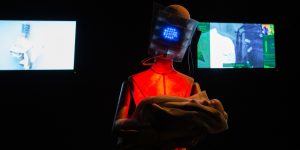
ROBOTIKA, The Nannybot
Joaquín Fargas (AR)
Robotika is a cyber nanny whose duty is to preserve the human race. Robotika challenges the limits of the human being concept. It is a robot vested with artificial intelligence that shall act as a “galactic ark,” looking for a suitable environment for human development.
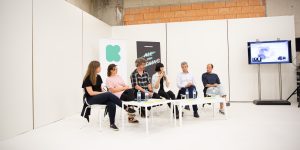
Gallery Spaces Panel III: The Potential and Limitations of the Media Art Market
The media art market is constantly changing and gradually becoming more diverse through new players such as auction houses, mega galleries, and experimental galleries. What is the progression of the art and technology market? What are the emerging trends for this market? This panel will broaden people’s understanding of the media art market and collecting as well as raise questions about not only their potential but also their limitations through a conversation between artists, collectors, gallerists, and curators.

DM 1.0
DTG (JP)
Image analysis by deep learning has improved AI drastically, but the AI does not yet understand the meaning of “cat.” DM 1.0 is an interactive drawing machine, and the intention is to experiment with an abstract concept (this time a circle) that people have. Humans draw through rotational movement of their joints, and the drawing process of DM 1.0 is a combination of two linear motions. This work will make us aware of the difference between human physicality and machine drawing.


